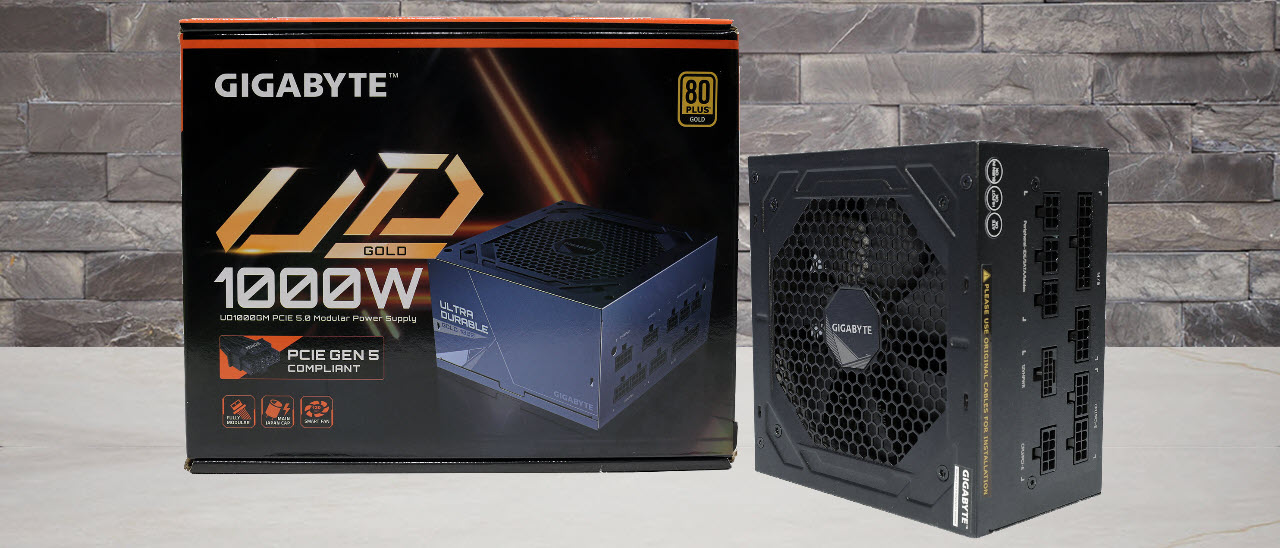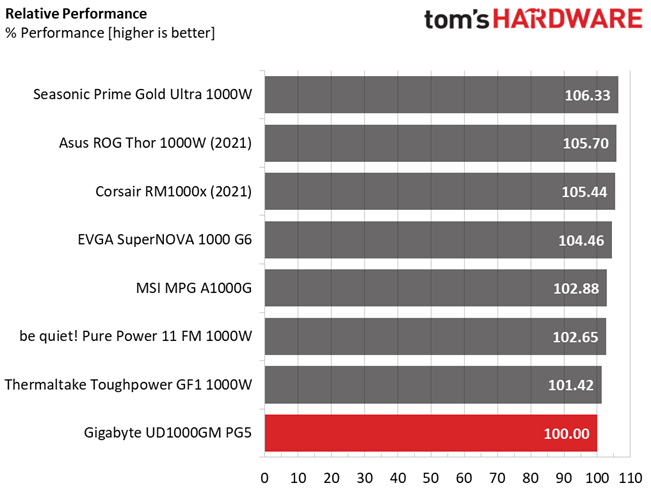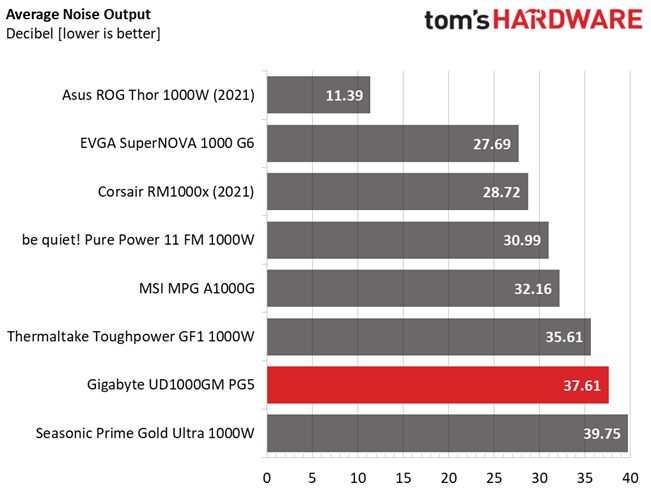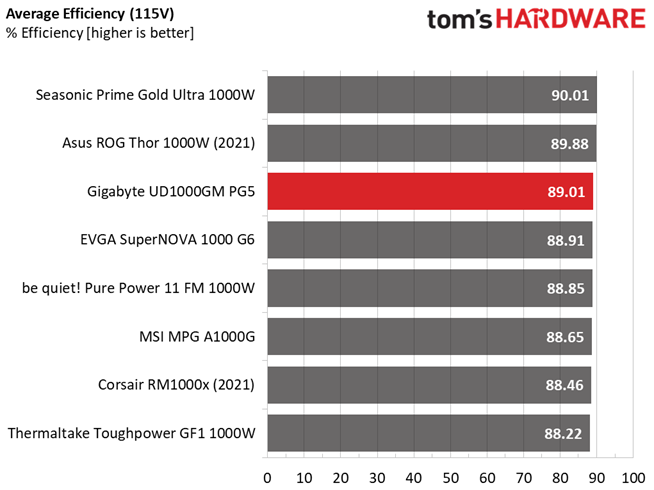Why you can trust Tom's Hardware
Performance Rating
The overall performance is not competitive. With a longer hold-up time, better ripple suppression at 12V and 5V, and tighter load regulation and transient response on the minor rails, the UD1000GM PG5 would be closer to the competition.
Noise Rating
The graph below depicts the cooling fan's average noise over the PSU's operating range, with an ambient temperature between 30 to 32 degrees Celsius (86 to 89.6 degrees Fahrenheit).
Under normal operating temperatures, the average noise output is high.
Efficiency Rating
The following graph shows the PSU's average efficiency throughout its operating range with an ambient temperature close to 30 degrees Celsius.
The average efficiency is high.
Power Factor Rating
The following graphs show the PSU's average power factor reading throughout its operating range with an ambient temperature close to 30 degrees Celsius and 115V/230V voltage input.
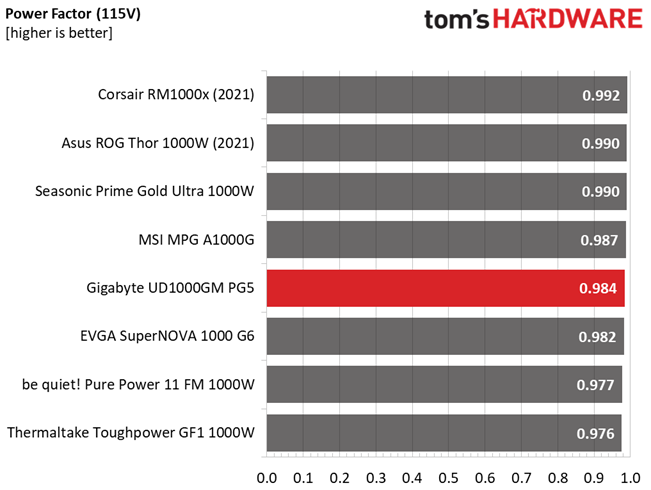
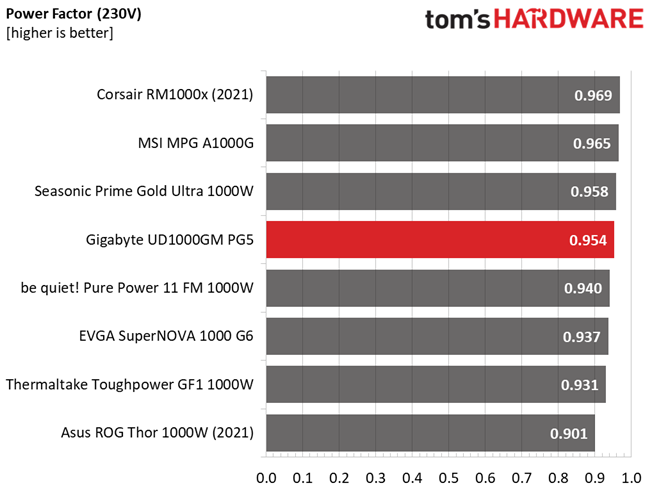
The APFC converter has decent performance.
Get Tom's Hardware's best news and in-depth reviews, straight to your inbox.
MORE: Best Power Supplies
MORE: How We Test Power Supplies
MORE: All Power Supply Content
Current page: Performance, Noise, Efficiency and Power Factor
Prev Page Transient Response Tests, Timing Tests, Ripple Measurements and EMC Pre-Compliance Testing Next Page Bottom Line
Aris Mpitziopoulos is a contributing editor at Tom's Hardware, covering PSUs.
-
Udyr So this is a 4 star product with 1, 2, 3, 4... 12 cons?Reply
The cons are somewhat consistent with the review on TPU, but over there it was not a recommended product.
Maybe there's something more my ignorant self is not seeing here. -
DRagor ReplyUdyr said:So this is a 4 star product with 1, 2, 3, 4... 12 cons?The Gigabyte UD1000GM PG5 is the first PSU available with a 12+4 pin PCIe connector, so practically, it doesn't have any competitors yet.
How it was? In the land of blind one eyed is a king? -
WrongRookie No thanks. I'd rather wait for Seasonic do one than get another one that could end up explodingReply -
Udyr Reply
I understand the reference, but in this case, a unit with these many downsides doesn't justify a recommendation, unless there's something else besides being the only one available (for now).DRagor said:How it was? In the land of blind one eyed is a king? -
thisisaname Reply
Some of the positives are not that great either.Udyr said:So this is a 4 star product with 1, 2, 3, 4... 12 cons?
The cons are somewhat consistent with the review on TPU, but over there it was not a recommended product.
Maybe there's something more my ignorant self is not seeing here.
+Full power at 47 degrees Celsius
+Most protection features are properly set -
watzupken Once beaten, twice shy. After the shady practice and persistent denial of critical flaws with their product by Gigabyte, even if this is a 5 stars PSU, I will not bother to consider it. There are much better options out there. I rather pay more than to deal with shady companies. In my opinion, it is not the product that we need to be mindful because every company will at some point produce bad product. It is how they take steps to resolve the issue and maintain that goodwill. Gigabyte basically burned that goodwill in the PSU fiasco. So no more Gigabyte products for me since the company can’t be bothered.Reply
